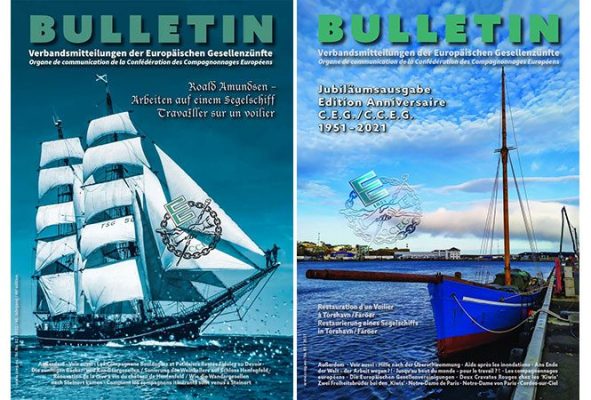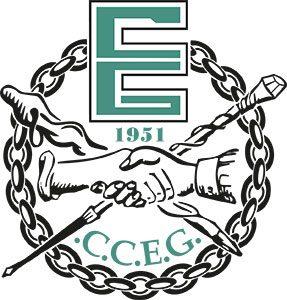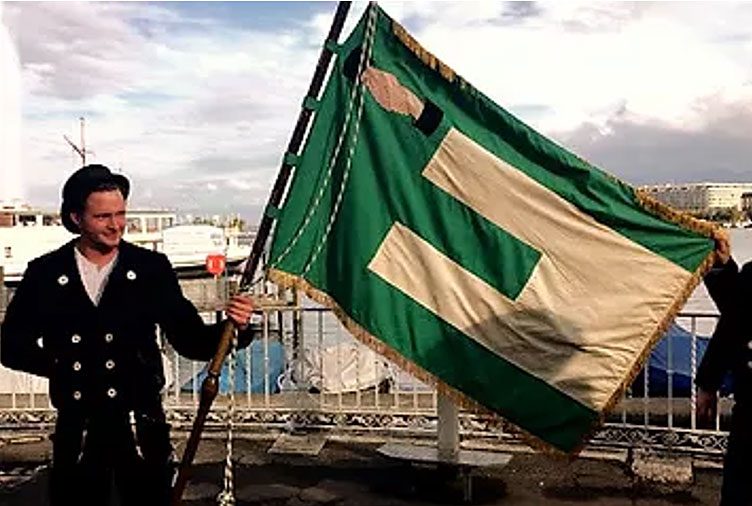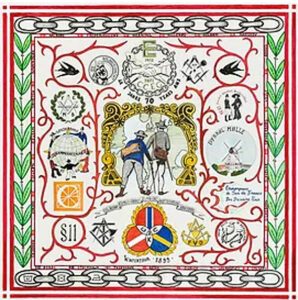CONFEDERATION OF EUROPEAN COMPANY / EUROPÄISCHE GESELLENZÜNFTE
Transnational Association born in 1951 under the auspices of UNESCO with participatory status at the Conference of INGOs of the Council of Europe
The Companion Union has been a member of the C.C.E.G. since the creation of the confederation.
This transnational organisation is intended to encourage exchanges and meetings between the members of the Companion of French Rites (France, Switzerland, Belgium) and members of the Companion of Germanic Rites (Germany, Switzerland, Austria, Scandinavia).
The C.C.E.G. is an association law of 1901 headquartered in Paris.
Its tasks are:
- To promote the traditions of European companions in order to develop a better understanding between peoples.
- Promote the mobility of young professionals by raising awareness of travel, vocational and human training.
- Maintain trade relations between the 9 member companies of the confederation.
- Assist and facilitate professional development.
- Promote greater fraternity and tolerance among peoples through travel and trade.
Activities:
The CCEG publishes its own newspaper: Le BULLETIN is a biannual bilingual French-German magazine, several copies of which are sent to each of our Cayennes. Everyone can ask their cayenne for the last copy.
Confederation organise meetings and meetings, offer vocational training courses and fosters the reception of young itinerants in the houses of the Companions of other societies and abroad (mainly in Europe).

The first contacts:
Even before the creation of the CCEG, contacts existed between German and French companions, as attested by the photo on 12 October 1930, which was taken in Paris during a tribute to George Sand. We recognize the Germans in uniform.
The first fruits of confederation date back to 1939. Roger Lecotté, who will be the first curator of the Companion Museum in Tours, is organizing an exhibition entitled «The Companions of the Tour de France» and the desire to give a European dimension to this project. The declaration of war between Germany and France will be cut short.
During the Second World War, in France and Germany, companionship was prohibited.
From post-war to today:
In 1951, always under the impulse of Roger Lecotté, on the occasion of the bimillennium of Paris, a large exhibition entitled « Paris and the Companions of the Tour de France» was presented at the National Museum of Popular Art and Traditions.
Roger Lecotté took the initiative to connect the Companions on both sides of the Rhine: the Companion Union (UCDDU) and the companies that would come together to form the Companion Federation (FCMB) were at the outset in favour of the project!
In April of that same year, 4 German Carpenter Companions of the Honnese Foreign Carpenters and Coverers of Germany (black ties) were received a week in Paris on the occasion of a national labour exhibition at the Palais de Chaillot.
In November, 4 French Companions accompanied Roger Lecotté and Monsieur Vergnole, Paris City Councillor and President of the Labour Exhibitions, to Hamburg and began consultations for a rapprochement.
The Constituent Assembly took place on 16 November 1952 in Tours and the Carpenter Companion Aimé Liabastre de la cayenne des CCDD de Toulouse was elected first president.
The principle of gathering every 5 years was then adopted, arrangements supplemented by annual general meetings.

The first Board of Directors took place in early December and The first general assembly was held on 20 December 1952 in Paris.
The first statutes were deposited at the Paris Police Prefecture on 7 February 1953, registered under No. 53-104 and published on 6 March 1953 in No. 56 of the Official Journal.
The first European gathering of companions was held on 15 and 16 August 1953 in Luxembourg. The event was attended by a representative of Unesco, a representative of the German Government, the Ambassador of France to the Federal Republic of Germany and representatives of the professional, employers and workers' chambers.
700 companions were gathered! The French Companions were from the Companion Union and the new Companion Federation. The German and Swiss Companions were from the Honnese foreign society carpenters and roofers and the Honnese foreign society and masons and stone tailors.
In 1958, this committee first took the name of CEG for European Companions Gesellenzünfte. This name will become CCEG in 1983, with the addition of a « C » for Confederation.
In April 1978, the CCEG was granted consultative status with the Council of Europe by becoming a member of the Conference of International Non-Governmental Organisations (OING) which gathers in Strasbourg. This status became participatory in 2003.

Did you know?!
The CCEG banner is directly inspired by the federalist flag, emblem of the International European Movement founded in 1948, considered to be the ancestor of the current European flag.
The E green on white background evokes a ditinant underwear drying on a meadow!
THE 9 ADHERENT CORPORATIONS
Germany / Austria / Switzerland:
- Gesellschaft des rechtschaffen fremden und einheimischen Maurer- und Steinhauergesellen (r.frd.M)
- (Foreign guests and residents Masons and Stone tailors, black ties) since 1952
- Vereinigung der rechtschaffen fremden Zimmerer- und Schieferdeckergesellen (r.frd.Z)
- (Honnestes Charpentiers and Curtains-Sardiers, black ties) since 1952
- Fremder Freiheitsschacht (Freiheitsbrüder) (Frères de Liberté, red ties) since 1980
- Rolandschacht (Rolandsbrüder) (Roland brothers, blue ties) since 1980
- Freie Vogtländer Deutschland (F.V.D.) (Free Vogtländer of Germany, golden coats) since 1980
France / Switzerland :
- Federation Companion of Building Crafts (Fédé.) since 1952
- Companion Union of United Duties (U.C.D.D.U.) since 1952
Scandinavia:
- CUK-Naverne (Scandinavian Travellers Association) since 1963
Belgium:
- Companion Federation of Trades of Belgium (F.C.M.B.) since 1958
COMMON ACTIONS
Working together:
In addition to individual hirings between European countries, itinerants from the Companion Union are invited to be more active within the CCEG.
There is an opportunity to participate in CASA CALFELOR project activities in Sibu, Romania. The other important place of cooperation is EUROPAHAUS in Dümmer, Germany.
More information on the CCEG website: www.cceg.eu

TO BUY THE CHARLIE "SONDERBOURG 2021"






